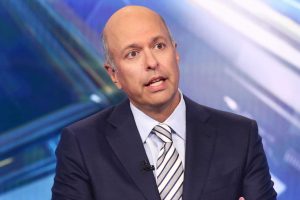Inflation watch: Why the Fed is paying close attention to this chart

The Federal Reserve is closely watching inflation expectations, and investors ought to, too.
Lakshman Achuthan, an economic forecaster and co-founder of the Economic Cycle Research Institute, highlighted one chart that the Fed is keeping an eye on for where inflation and rates could head next.
"Ten-year breakeven inflation expectations, that's the bottom line, that's risen to around 2.5% and that's the highest it's been in eight years and that's important because the Fed is focused on them," Achuthan told CNBC's "Trading Nation" on Thursday. "Basically, if inflation expectations remain above the Fed's kind of 2% target on a sustained basis, that's going to make policymakers more hawkish."
After Friday's shockingly low employment report for April, the 10-year yield dipped to 1.51%, making a move to 2.5% a significant increase. Inflation has been on the rise lately, a development the Fed has viewed as transitory.
Producer prices in March, for example, saw their biggest annual gain in more than nine years. Consumer prices also rose sharply in March. April data is scheduled for next week.
"The backdrop of this is that the Fed has shifted its policy framework from forecasting, kind of looking ahead, to just being outcome-based, and so they need to track stuff like this very, very closely. And, of course, that future inflation gauge on the top, that's a leading indicator. That does forecast, and that's telling us, it's going to keep rising," said Achuthan.
The U.S. future inflation gauge is at its highest level in 30 years, Achuthan said. Without Fed intervention, that suggests rates are free to head even higher.
That likely means the Fed is behind the curve in tempering inflation, though that's by design, not by accident, he said.
"They used to ostensibly try to forecast, to predict it, and they just said, 'Yeah, we don't know how to forecast it so we're not even going to try. We're just going to see where it goes, and only if it gets out of hand for a sustained period will we act' and the reason they had to do this is because they really blew it in 2018. In 2018, they were hiking and the inflation was turning down and … they gave up the ghost, they had to give it up after that," he said.
Higher rates, then, should be factored into investors' portfolio allocation decisions, Achuthan said. Banks, for example, tend to perform well in a high-interest rate environment, while growth stocks do not.
Disclaimer
Source: Read Full Article
